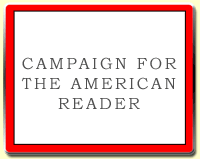 He recommended some choice "Chinese Life Stories" with Alec Ash at FiveBooks, including:
He recommended some choice "Chinese Life Stories" with Alec Ash at FiveBooks, including:Factory Girls: From Village to City in a Changing ChinaRead about the other books Wasserstrom recommended.
Leslie T Chang
Your fifth pick is Leslie Chang’s Factory Girls, which tells, in wonderful detail, the stories of young women who leave their families across China’s countryside to work in the factories of southern China. What do you love about this book?
I love the way it’s written, and the way that Chang blends her own life story in with it. She pairs the story of her family’s migration out of China to the United States, where she grew up, to the movement of young women from rural China to urban China today. And she sets up a parallel between the way that American cities were transformed by overseas immigrants who fuelled the American industrial rise, with the enormous migration today – that doesn’t involve crossing an ocean or leaving one country for another – of rural dwellers to the world of Chinese cities.
I also love the way she brings to our attention the distinctive personalities of young Chinese women. She describes them as working in very difficult conditions, but often experiencing them as liberating, because they have so much more freedom and control over their private life than they had in their villages, where male-dominated family structures remain powerful.
For a Western journalist and author – even if she is ethnically Chinese – do you think it’s hard to uncover the real personality of someone natively Chinese?
Absolutely, but actually you put your finger on something very significant. I think the fact that Leslie Chang is ethnically Chinese did make a difference in her ability to tell certain kinds of story, and she’s fairly upfront about that. At one point she goes back to visit the village of one of the girls who she’s got to know, and she’s told she’ll be sleeping in the bed with the other females of the family. It’s hard to imagine that kind of entrée into local family life if she hadn’t been ethnically Chinese.
But I think there’s a challenge for any ethnographer – and this book is in ways very much like an ethnography – to get at people’s real opinions and feelings. You have to invest a lot of time into it, and she spent a lot of time, over an extended period, getting to know these people, and getting them to share things with her that they wouldn’t have in a more casual interview setting.
Her husband is Peter Hessler, who’s written a fair few Chinese life stories himself.
It’s quite amazing to think of two members of a couple who have written books that are very different from one another, but share skilful writing and deep empathy for the people that they’re describing.I also loved being able to end with this book, having begun with Susan Mann’s. Mann’s book is an effort to bring to life the experience of privileged women who were ignored in the historical record; whereas Chang’s is about less privileged women a century later who, in the specificity of their experience, are also ignored.
Before I let you go, I’ll cave in and allow you a sixth recommendation – what would you suggest to a China novice as their first book about the country?
For China as it is now, Peter Hessler’s Country Driving is a wonderful place to start. It gives you a sense of the sheer speed at which the country is being transformed, and how at a human level people are experiencing and dealing with that.
In 2010 Timothy Hallinan called "Factory Girls ... the best nonfiction book I've read all year, and hands down the best in a long chain of books about modern China."
See Wasserstrom's list of five books that explain the myths & facts about China.
--Marshal Zeringue



